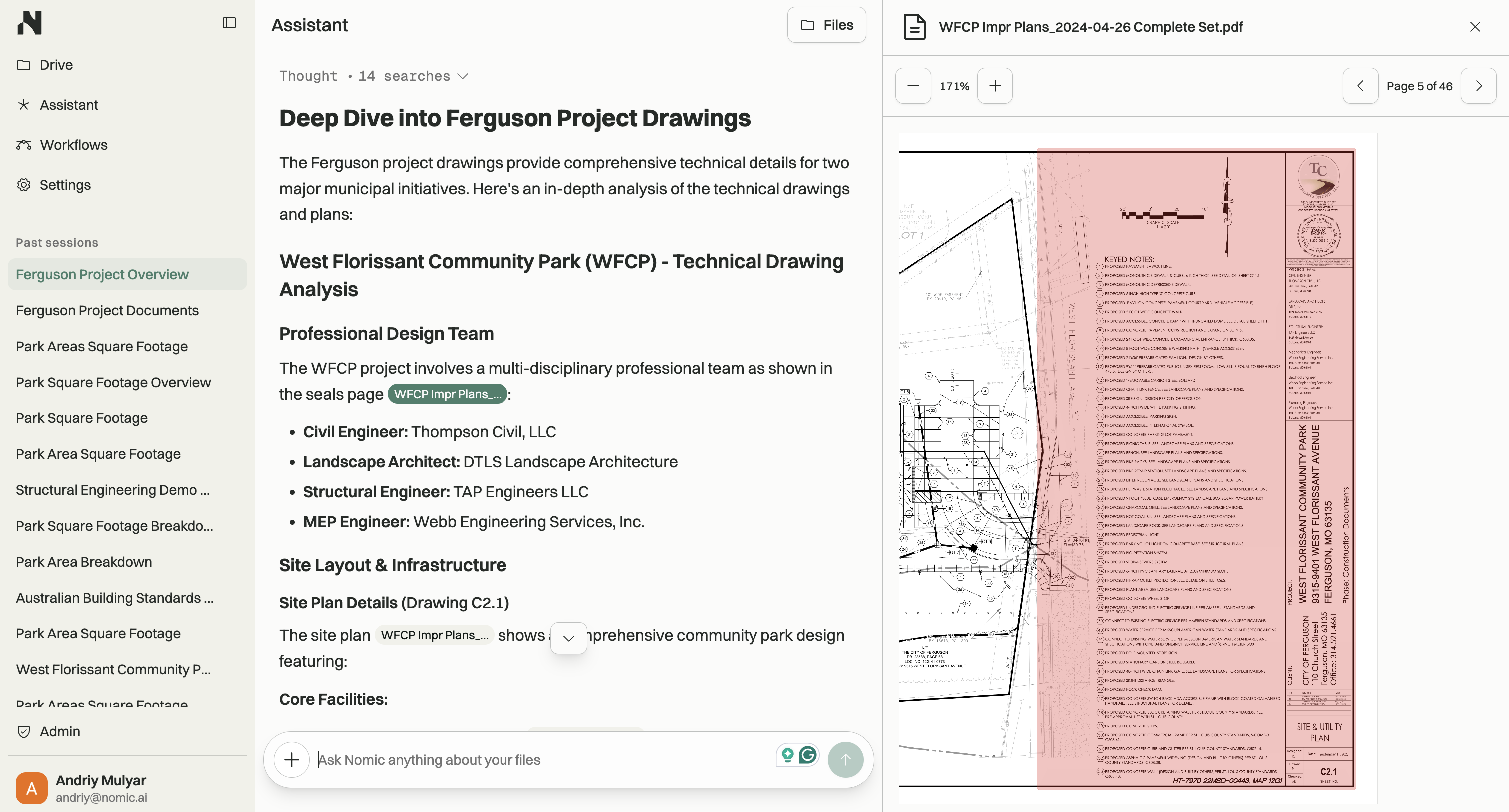Overview
Welcome to Nomic documentation. Nomic accelerates project delivery with domain-specific AI that understands your firm and project knowledge. Check drawing sheets for code compliance, find details buried in past projects, or get started quickly with Assistant.

Get started quickly
Core Features
AI that understands design drawings and engineering specs.
Capabilities
Nomic provides powerful capabilities that accelerate critical project workflows:
- Code Compliance – Check compliance across 380+ codes and standards, getting cited answers without digging through PDFs
- Active Project Research – Ask questions and perform research across all project data to find information quickly. Search across active project files to find details, compare information, and answer questions
- Workflows – Build custom workflows to automate firm-specific processes and project tasks. Use pre-built workflows for QA/QC reviews, RFI responses, and submittal reviews
For deployment options and security features, see Deployment Options and Security and Privacy.
Models
Nomic's domain-specific models power search and document understanding across your projects.